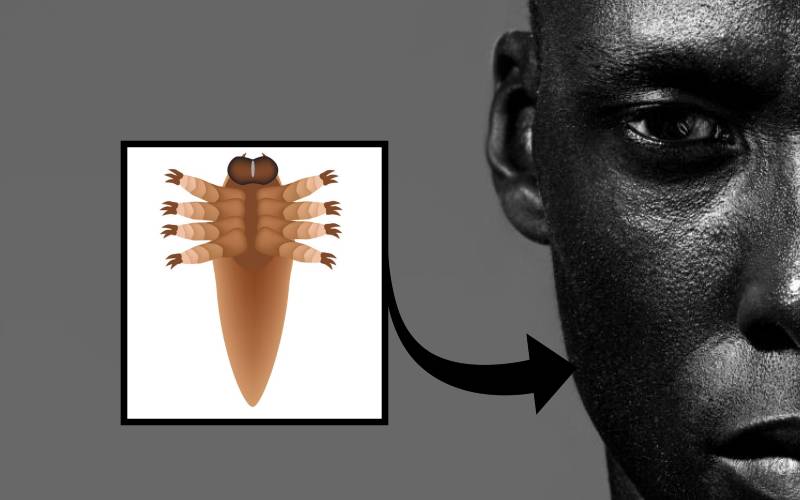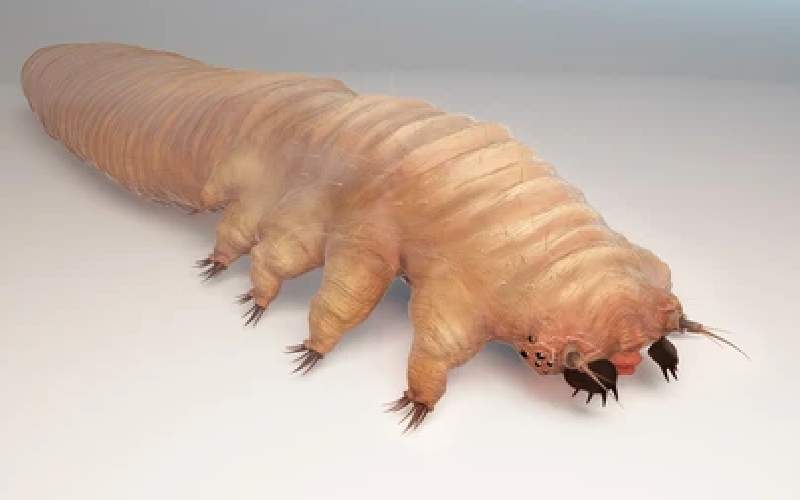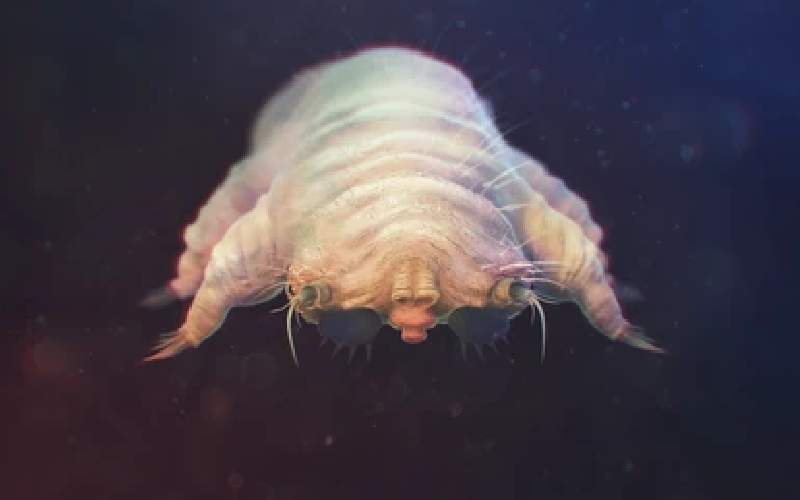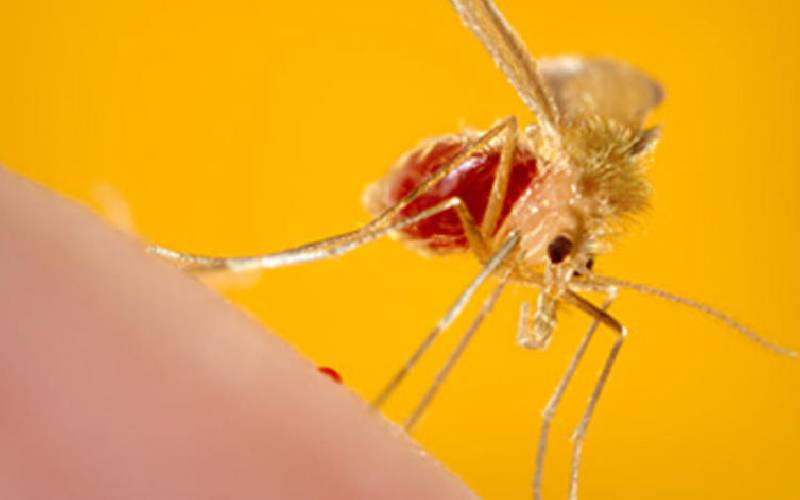
The eight-legged mites - called Demodex - live on the faces of human adults. [Courtesy]
Every pore on the human face is a walled garden in which tiny mites live, multiply and die.
In news that is bound to have individuals scratching their heads, scientists have revealed that there are eight-legged mites - called Demodex - that live on the faces of human adults.
Indeed, there are creatures scurrying across your face as you read this... but they are too small to be seen with the naked eye.
At some point, maybe now, maybe in a few days, they find a cozy pore in your skin and lay a single egg there.
Scientists have revealed these mites are smaller than a grain of sand, are a kind of arachnid, like spiders and they feast on the oil and cells in the skin. They thrive particularly on oily noses, cheeks, and foreheads.
In research carried out at California Academy of Sciences in San Francisco, scientists proved that the scaly microscopic mites live in hair follicles and oil glands of a human face.
“They look kind of like stubby little worms,” said the lead researcher, Dr Michelle Trautwein, who analysed the faces of more than 2,000 participants - and found face mites on all of them.
Kenyan dermatologist Caleb Kadima of the Jaramogi Oginga Odinga Teaching and Referral Hospital, concurred that there are parasites that live on human skin causing fungal infections.
He, however, said more studies are needed to ascertain revelations from the study of face mites in the US considering “we are all humans and what affects any of us anywhere across the globe can affect everyone.”
Scientists at Jomo Kenyatta University of Agriculture and Technology (JKUAT) College of Agriculture and Natural Resources noted there is a possibility of Demodex mites in Africa.
A research study at the institution on Demodex shows traces in Kenya, with Dr Paul Kinoti from the College of Agriculture and Natural Resources saying that previous research had found a prevalence of Demodex in Sickle Cell Anemia (SCA) patients.

Demodex mites. [Courtesy]
However, Kinoti said there has so far been no conclusive research studies on Demodex mites targeting the Kenyan population.
“Given that Demodex mites are more often found in Sickle Cell Anemia patients, the mites could be a risk factor for frequent episodes in these patients,” Kinoti explained.
He urged more research to be directed towards Demodex in humans to provide solutions and affirm the facts.
In the research published in Science Daily Journal scientists noted that face mites have evolved alongside humans since the dawn of time.
They further suspect they’ve been living on human faces for over 200,000 years.
And today, studies suggest practically every adult on the planet has thousands of them and that humans live with them their entire life. Babies get them from their parents a few days after birth.
“And once those face mites are on you, the only thing they enjoy as much as slurping oil and nutrients from your pores is mating all over your face,” reads part of the study.
Afterwards, females burrow deep into pores where they lay their eggs.
When individuals wash their faces some of them get off. But they cannot be eradicated completely. Because even if you treat them with antibiotics, they’ll return in about six weeks.
Face mites — also known by their scientific name, Demodex folliculorum and Demodex brevis - spend their days facedown inside hair follicles, nestled up against the hair shaft.
Usually, however, face mites are harmless. They only become a problem when they multiply out of control. This can happen in people with an impaired immune system. It’s also been seen in people with a painful skin condition called rosacea.
Demodex eat sebum; the greasy oil skin makes to protect itself and keep it from drying out. The sebum is produced in the sebaceous glands, which empty into the hair follicles and coat both the hair shaft and face mite.

Demodex mites. [Courtesy]
That’s why the greasiest parts of human body, such as around the eyes, nose and mouth, are more likely harbour a higher concentration of mites.
The mites live for about two weeks. They spend most of their time tucked inside the pores, but while people sleep, they crawl out onto the skin’s surface to mate and then head back to lay their eggs.
It seems our immune system is able to keep their numbers in check, but some people can experience problems with the mites.
Dermatologists occasionally treat patients who have an overload of face mites, which results in a condition called demodicosis.
“There is a very particular look for people suffering from demodicosis called Demodex frost,” scientists noted.
“It’s sort of a white sheen on the skin. And if you look really closely, you can see it coming out of every pore. If you scrape those pores, you can see it frothing with little Demodex face mites”.
The condition is relatively rare and is often connected to a decline in the immune system, such as receiving immunosuppressive drugs after transplant surgery, chemotherapy, or immunodeficiency diseases such as Aids.
Demodicosis can also be triggered by local suppression of the immune system, like using itch-relieving hydrocortisone cream on the face.
 The Standard Group Plc is a multi-media organization with investments in media platforms spanning newspaper print
operations, television, radio broadcasting, digital and online services. The Standard Group is recognized as a
leading multi-media house in Kenya with a key influence in matters of national and international interest.
The Standard Group Plc is a multi-media organization with investments in media platforms spanning newspaper print
operations, television, radio broadcasting, digital and online services. The Standard Group is recognized as a
leading multi-media house in Kenya with a key influence in matters of national and international interest.











